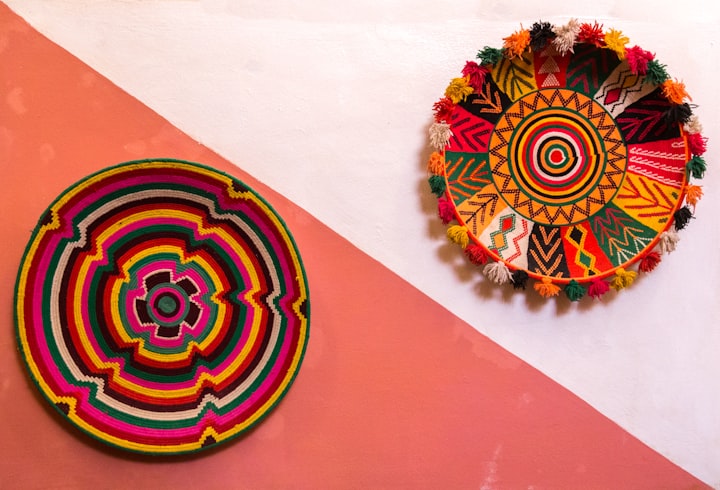
“Do I hear twenty-five thousand… twenty-five thousand? Offering the diary of Sien Hoornik, girlfriend of Vincent Van Gogh. Last bid is twenty-thousand… twenty-thousand. Fair warning. Going once… going twice…” The knock of the gavel: “Sold! On the phone… twenty thousand!” It was late in the afternoon, and my prized possession was sold.
I’m alone now in the auction studio - numbered paddles resting on plush chairs. The stage is still brightly lit, spotlights on the empty display easels. I’m happy that this was a private auction for only gallery curators, and that I am going to receive twenty-thousand dollars for the diary. But I feel a deep sadness – like a lover is gone forever.
The diary was produced by a poor, obscure soul. She became known only because she shared her life with another unfortunate who was also famous - after he died. Her scribbled notes were simple, yet so intimate, that I felt like she and I had been lovers. It’s difficult for me to imagine that she died long before I was even born.
The diary had appeared in my life nearly a decade ago when I visited Holland; I was trying to recuperate from the loss of a real lover. Since I had heard many Dutch memories from my grandparents, I chose to visit the Netherlands instead of the other distractive cultures of France or Italy. Perhaps it was some muse that drew me to Holland to re-introduce her to the world.
I was trying to enjoy myself – with no luck – in Rotterdam. Despite the unique museums and exciting architecture, I quickly became bored. I frequented the outdoor cafes to meet the friendly people, but my mood automatically kept them at a distance.
As I exited one of the cafes, I noticed a colorful shop sign a short way up a side street. Curious, I approached the shop. It was an antique shop located on a street of large upper-class taverns and specialty shops - small, with unkept, dusty offerings in the window. Because it was so out of place, I had to venture inside.
I had stepped into a treasure chest from a previous century. The brick walls were barely visible through the layers of hanging pictures, tapestries, and clothing. Rusty farm tools hung from the ceiling; glass counters were filled with costume jewelry, glassware, and knick-knacks. One entire wall was dusty books on crowded bookshelves.
After an hour or so, my ‘journey’ through the shop led me to a narrow stair at the shop’s rear. The owner motioned me to explore the next floor. More treasures – some familiar, some strange; more history, more ‘pieces’ of real lives, and more dust surrounded me. I wanted to buy everything I saw, but I had to settle for one ‘practical’ souvenir - a book perhaps. Putting one interesting art book after another back in their places on the shelves, a small book fell to the floor - from where, I don’t know. The cover was black leather with a wooden pencil tucked in the binding. The book held perhaps a hundred pages of quality paper - a slight coloration on the page edges. I imagined that it hadn’t been opened since it was last used. It looked to be a diary with numerous sketches… actually, it was a sketchbook with occasional entries.
As I fanned through the pages, I could see the progress of the artist from true beginner to a reasonably accomplished art practitioner. Each page illustrated attempts at capturing an object – under which was a label denoting the object or its view. The upper corner of each page noted the date of entry. Inside the front cover was blank except for the owner’s name and date – Clasina Hoornik 1881. The first dozen pages, beginning with a Dutch 11feb, presented several crude attempts at simple shapes of varying proportions. By late March, the student was experimenting with texture on the shapes. The sequence of the sketches showed not only an improvement in skill, but a progressive confidence. I found the diary to be a fascinating lesson of how a skill can be mastered… so I bought the book.
The diary sat in my ‘Miscellaneous Memories’ box for over nine years. I was taking an art appreciation class at the local college where I had become friends with David, the teacher. Over coffee, one evening after class, I mentioned the acquired diary and how interesting it was to see the progress of the novice artist. Since he showed an interest, I brought it to him the following week.
Several days later, David called me and insisted we meet at our coffee shop – immediately! Before I even settled into the booth, he asked in a hushed but excited tone, “Do you know whose diary this is?” When I answered in the negative, he opened the cover and showed me the name: “Clasina Hoornik… Clasina Maria Hoornik… Sien Hoornik! Van Gogh’s girlfriend! Vincent Van Gogh… was teaching… Sien Hoornik… how to draw! And, catch this! She made notes about their relationship! This is amazing!” He pulled a sheaf of photocopies from a manila folder: “When I recognized the name, I sent copies of the pages to a Dutch historian.”
I shrugged and gave him a “so-what” look. Everyone knew about Van Gogh – that he had a hard life, he never sold a painting, he cut off his ear over some prostitute, and eventually committed suicide. “That prostitute… is this Clasina Hoornk!“ he shouted in a whisper. “Do you know what this is worth?” My blank reaction surprised him.
“You don’t understand,” he continued, his breathing more measured. “Yes, we know she was a prostitute... yes, that she was a model of his. But more importantly, this diary tells us about their feelings for each other!”
David explained further. “It has long been believed that for the two years they were together, they only had an arrangement - she had a safe place to live for herself and her baby, and Van Gogh had a model that was accessible and free!” His voice added a hint of embarrassment: “And yes, it’s thought that the second baby she had – Wilhelm – might have been Vincent’s which... But never mind that! She loved Vincent - she says so in her notes. And Vincent had feelings for her - the fact that he took the time to teach her shows that. And as high-strung as he was, he was tender with her and the children.”
I was not as impressed by these revelations as David was - and as the art world might become. I had never read Sien’s notes. I had simply enjoyed ‘watching’ her progress as an art student.
David fanned through the book saying: “The first third of the diary is simple sketches with labels of the subjects… boxes, table, pot and so on. Then you see how patiently Vincent guided her in making the boxes into farm buildings… or how wavy lines became rows of crops. Here, look…” He stopped on the page marked 19juni. “On the left page, Vincent had her sketch two boxes, then two boxes with texture, then with shades and shadows. On the right page are two barns out in the Dutch countryside… similar proportions as the boxes, same distance relationships, same shadows and shading!”
He flipped to 13aug. Turning the page to me: “Here, she starts to make notes about the techniques he is teaching her.” I was looking at a simple landscape: the size and position of the two large trees on the left side balanced against the single tree on the right; simple lines described a cloudy sky. At the bottom, Sien noted: ‘Composition is everything.’
The next page David flashed to me was of a silhouetted tree fronting a gentle hill. Sien added, ‘Vincent is pleased with me.’ I, too, was pleased with Sien - and beginning to feel proud of her.
He turned to the center of the book. “Here’s an unfinished sketch of a woman at a loom and Sien writes, ‘I know I’m not very pretty.’” I looked at the text and I felt sad for her.
14dec: On a loose sketch indicating a freedom of expression, she wrote, “Perfect lines are unnecessary… a waste of focus.” On a later page, she noted, “Vincent wants me to try color. Bold colors are emotion… I am afraid of both.”
Sien had continued to make amazing progress, illustrated by her sketch of Vincent in a rocking chair, a baby in his lap, a girl on the floor with a doll. She captured the peacefulness of the scene. David said, “Look at the hint of a smile on Vincent’s face!”
He went on to explain that Van Gogh’s family and friends stopped supporting Vincent because his drawings didn’t sell. “Look what she writes here: ‘I found their letters... They abandon my Vincent because of me. Why do they hate me so? I love him so much. He feels good when he is with us. They all have so much and my Vincent has nothing—'”
David took a sip of cold coffee. “It’s been argued that Van Gogh either had severe tinnitus or heard voices. On 23apr, Sien confirms the tinnitus: ‘He was pounding the side of his head again... the buzzing gets worse.’”
Each discovery that excited David made me more upset. Sien’s brief entry on 14juli hurt me deeply: “I offered to go back to the streets to get some money. He hit me…”
On a sketchless page dated 16sep, Sien wrote “Vincent bought flowers for me. I want to draw them.”
Three days later, in sad handwriting: “Vincent is frustrated. He left us today to please his father. I am scared for Maria and Wilhelm… they are so happy with him.” David believed that in 1883 the relationship had ended.
I needed a distraction from my deepening sadness. I asked David, “When did Van Gogh die?”
“He killed himself in July, 1890. We always believed that they weren’t together for those seven years, but Sien indicates different. On 23aug, a month after he committed suicide... look at the anger in her handwriting: ‘I hate those people! He’s was happy with us, but they hated us and hurt my poor Vincent. Instead of coming home to me, he went home to God.”
“What ever happened to Sien?” I asked sadly.
“She committed suicide fourteen years later… in 1904.”
I felt the breath pulled from my chest as David turned to the diary’s last entry. It was a color sketch: On a wood-slat table in a bare kitchen: a metal coffee pot, a wooden cradle, some cut flowers. Beyond the window: a field of waving grain fronted barns and a silo. It was dated 12nov - the day she threw herself into the Schelde River. Underneath, Sien had written: “Wilhelm and Maria are grown. I can be with my Vincent again…”
Though I understood David’s enthusiasm for the historical value, I had cared about Sien’s artistic progress - like a parent watching his child mastering a new skill. I had also felt like a lover who was thrilled to see his woman being herself.
* * *
Here in the auction studio, now I’m not sure how I feel. I added something to the Van Gogh story and I made a lot of money… and I ‘met’ an amazing woman. To most people she was ‘just a prostitute.’ But wasn’t she ‘every woman’ – who struggles: to survive, to connect, to create… to be her best. I don’t know how people will judge her now… I don’t think it really matters.
The auctioneer just reminded me that it is closing time…





Comments
There are no comments for this story
Be the first to respond and start the conversation.